We offer layaway, spread payments on the piece of your dreams. Ask us for details. Free insured shipping on all orders !!!
Merry whatever-you-celebrate
and peace for all!!!
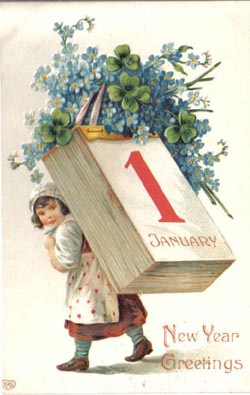 |
Thank you
for having the good taste
to call upon our expertise.
From Elkan Wijnberg, CEO
and the entire Adin-team
Don't sit under the Christmas tree
with anything else but me
 |
Victorian locket with rose cut diamond star motif
It could be well possible that this locket was made to celebrate the passage of Halley's comet. The passage of Halley inspired jewellers to make jewels in the shape of celestial bodies. This comet appears every 76 years. In 1705 Edmond Halley predicted, using Newton's newly formulated laws of motion, that the comet seen in 1531, 1607, and 1682 would return in 1758 (which was, alas, after his death). The comet did indeed return as redicted and was later named in his honor.
Or the maker of this beauty was just into stars.... who will tell after so many years?
Click the picture for more information on this beauty.
Flowery icicles discovered
in the Garden of Adin
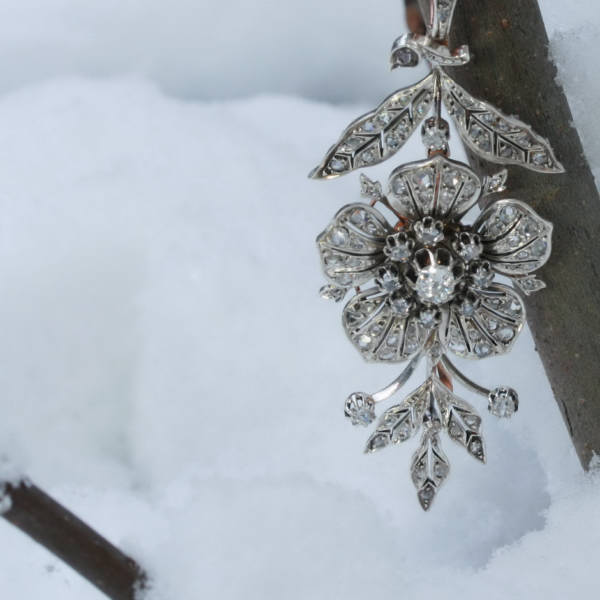 |
So it was that blizzard came up at evening and covered the Garden of Adin, and in the morning the snow lay all around the camp. And when the layer of mist lifted, there, on the surface of the wilderness, was a small sparkling substance, as fine as frost on the ground. And the Gardener picked it up and he was happy.
Click the picture for more information on this beauty.
Winter merriment in the Garden of Adin
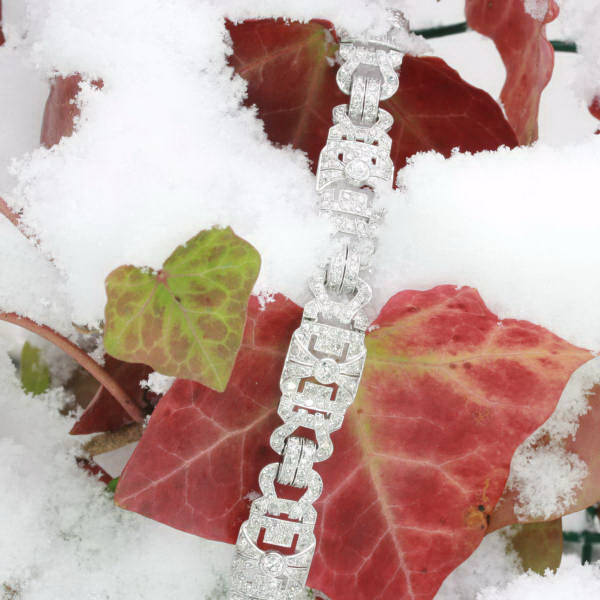 |
In the frosty Garden of Adin,
(while pelting snowballs at his beloved offspring)
much to the Gardener's joy and surprise
a bracelet was found
sparkling with glimmering ice.
Click the picture for more information on this beauty.
Neo Etruscan crucifix in original box
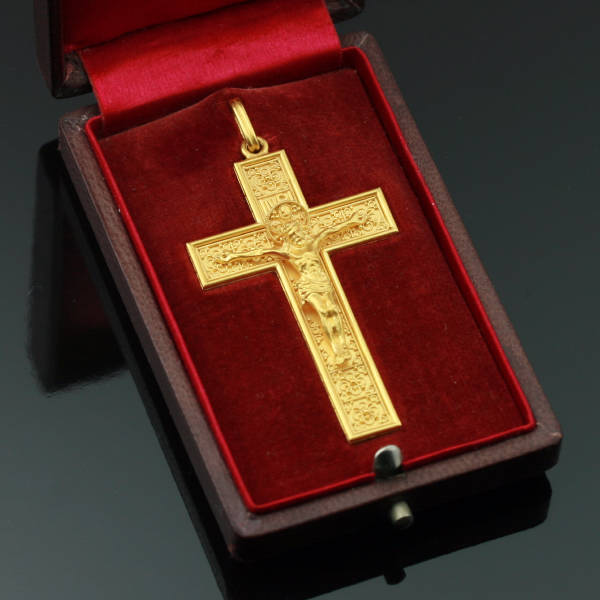 |
Top notch quality!
There are crosses and there are crosses but this one is one of the nicest in its sort that we have ever come along. Skilfully crafted with filigree and granules, a real joy for the eyes. The corpus is 3-dimensionally worked out and the aureole is also made in the finest filigree and granules technique. It comes in its original box with the text: "Luigi Freschi - Via Condotti - 55, 55a, 56 57, Corso Umberto 1º 401 - ROMA".
In the second half of the 19th Century goldsmiths of that era sought and found their inspiration by excavations such as Pompeï and the Etruscan treasures. Especially in Italy the so-called Neo-Etruscan style reached high levels as we can see here with this beautiful refined cross
This jewel features a filigree decoration, which is in fact thin golden wire twisted into refined motifs, in this case elegant little balls. You can also notice the use of granulation on this piece. Granulation is a technique where the goldsmith uses very small balls (granules) of metal, which are not soldered to the piece but welded. Both techniques demand very high skills and precision from the maker.
Click the picture for more information on this beauty.
Belgium and diamonds...
a marriage of centuries
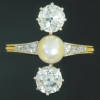 all diamond rings |
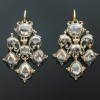 all diamond earrings |
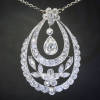 all diamond pendants |
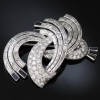 all diamond brooches |
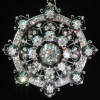 all diamond jewelry |
~ A kiss on the hand may be quite Continental, but diamonds are a girl's best friend. ~
Although Marilyn Monroe sang about them in 1953, diamonds are thought to have first been recognized and treasured as gemstones and religious icons in ancient India (where they were mined too). The usage of diamonds in engraving tools also dates to early human history. The name diamond is derived from the ancient Greek "adámas" meaning "unbreakable, untamed".
In 1475 Lodewyk (Louis) van Berquem, a Flemish stone-polisher from Bruges, Belgium, introduced the concept of absolute symmetry in the placement of facets on the stone. 17th century French jeweler, Jean-Baptiste Tavernier (1605 -1689, and also with Belgian roots), was one of the early pioneer's of diamond trade with India. In his book "The Six Voyages of Jean-Baptist Tavernier" he documented many historically significant diamond cuts.
Popularity of diamonds has risen since the 19th century because of increased supply, improved cutting and polishing techniques and growth in the world economy. And in our days we at Adin, based in Antwerp - Belgium, are offering the splendours of craftmanship from diamond polishers and goldsmiths of many centuries. This reflects itself in the diamond jewelry we have to offer from the 17th century and onwards.
Dear friend,
This time we take the liberty of sending you a mail without any special picture or back-ground information on symbolism, style or era. Just a list of present suggestions. We also would like to inform you that all orders till December 21st are still in time to be delivered before Christmas and that all orders will be specially packed in a free gift wrapping.
Hoping to be at your service with this,
do we remain,
antiqually yours,
The Adin team
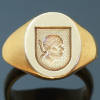 rings up to $500 |
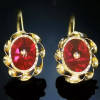 earrings up to $500 |
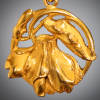 pendants up to $500 |
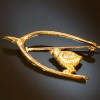 brooches up to $500 |
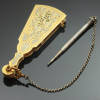 all jewelry up to $500 |
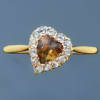 rings up to $1,500 |
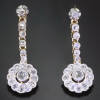 earrings up to $1,500 |
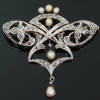 pendants up to $1,500 |
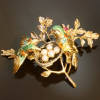 brooches up to $1,500 |
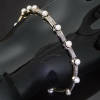 all jewelry up to $1,500 |
rings up to $5,000 |
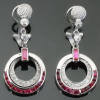 earrings up to $5,000 |
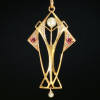 pendants up to $5,000 |
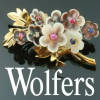 brooches up to $5,000 |
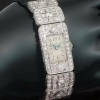 all jewelry up to $5,000 |
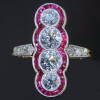 rings up to $10,000 |
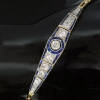 bracelets up to $10,000 |
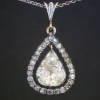 pendants up to $10,000 |
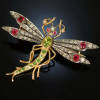 brooches up to $10,000 |
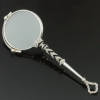 all jewelry up to $10,000 |
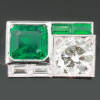 rings $10,000 + |
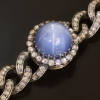 bracelets $10,000 + |
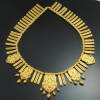 necklaces $10,000 + |
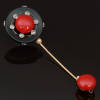 brooches $10,000 + |
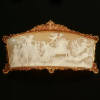 all jewelry $10,000 + |
In the hands of the beholder?
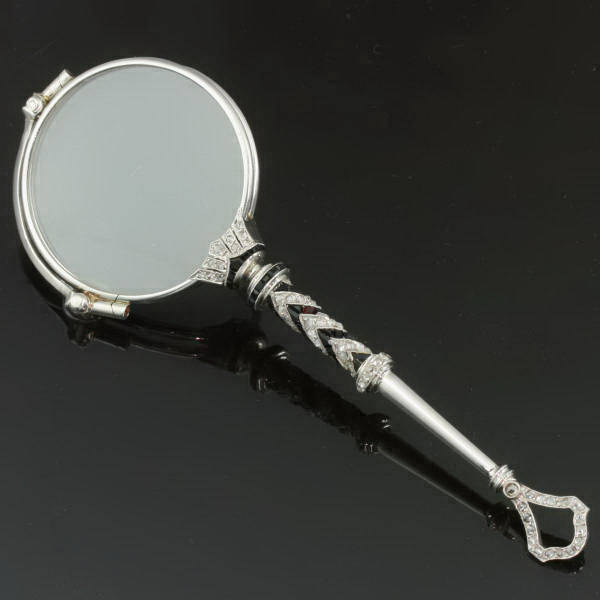 |
French Art Deco platinum lorgnette
(a real eye-catcher)
A lorgnette (or face-à-main) is a pair of glasses (or opera glasses) held by a long handle at one side mostly used by the (well-to-do) ladies.
This particular type of lorgnette has a hidden system in its stem that, by moving it slowly down with the tip of your fingers, will release a spring that will open the closed lorgnette with one glass and makes it into a double-glassed lorgnette.
Craftfully worked out in platinum and richly covered with rose cut diamonds and little carré calibrated stones makes this utensil a true jewel.
Click the picture for more information on this beauty.
Look what we found!
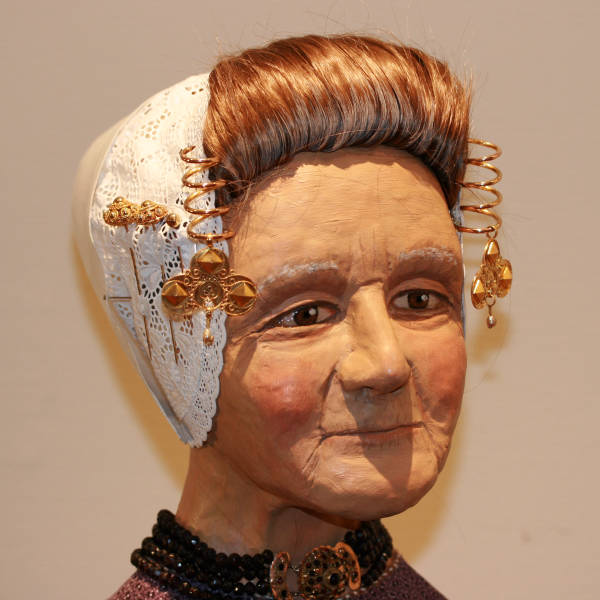 |
Antique head parure from Zeeland, Holland.
Although we do not think this is something you would wear it can be a valuable addendum to an antique jewelry collection. A very complete headset from Zeeland which is in the west-southern part of Holland, to be more specific from the area called Walcheren. To find a complete set is special because mostly these sets are split up to different heirs at legacies. This typical wear for a Zeeland country woman (or farmer's wife) was worn in the 19th Century till our days. Today there aren't nearly any people left who wear the dress of this local distinctive style. While the youngsters do not wear it at all any more the older people do wear it occasionally. And in 2003 the last two men wearing the traditional clothing died and most probably in another 10 till 15 years no woman will be wearing it any more either.
What is she wearing you would ask. Well, she is actually wearing more then you can see. First of all, over her back-combed (long) hair with the front of her hair in what is called in the local dialect “toer” (pronounce “tour”) she is wearing a starched so called “ondermuts” (Dutch for the little lace coif that is worn under the cap you see). Over this coif the actual head set was placed. This headset is called “ijzer” (Dutch for “iron”). The reason why it's called “iron” doesn't do it much justice as it is made of a U-shaped silver brace that goes over the back of the head to both temples. At both ends of this brace the gold curls are attached. Most of the times, the weight of the golden curls is engraved in the back of the silver brace as is the case here. It gives us the weight of 32 grams.
Then over this brace the final cap, called “langette”, (also stiffly starched) was placed and hold into its position with three gold needles at both sides of the head. These three needles are in three different sizes and made in gold filigree. Then last but not least, to finalize the outfit at both curls the actual jewel, a pendant, was attached, a sort of triangle plate with low pyramid shapes on it and a baroque pearl hanging underneath.
And then when it started to rain the women hated it because when their stiffly starched caps became wet and soft all their work was for nothing.
Click the picture for more information on this antique jewelry rarity.
Art Retro
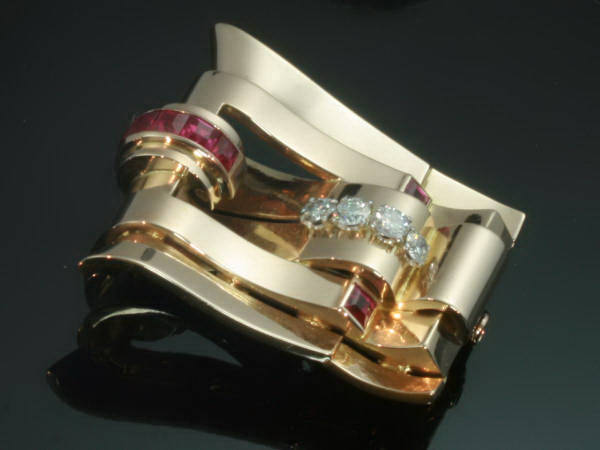 |
Retro Style is a recent designation for the period in the forties when large scale, stylized geometric forms, drapes, bows or ribbons were all the rage. The Retro style was strongly influenced by its predecessor: the Art Deco style. Using the same type and language of geometrical shapes but with bolder heavier lines, shapes and stones.
Typical for the Retro style is its imitation of three dimensional folds of fabric with the ribbon bow as its most popular motif, often highlighted in the center with a calibré cut ruby or sapphire knot (mostly lab-produced stones were used (see also Verneuil rubies and sapphires) and diamonds in various cuts as white accents.
That gold regained its popularity during the Retro period was due to the fact that platinum was not available to the goldsmiths and jewellers since this was being used for the war effort. This was the main reason that during the Retro period different colors of gold became popular - yellow gold was combined with rose gold and green gold in striking combinations. In France goldsmiths worked with no less then 27 shades of colors of gold.
Click the picture to see a close-up of this strong design retro brooch.
One of the joys of life...
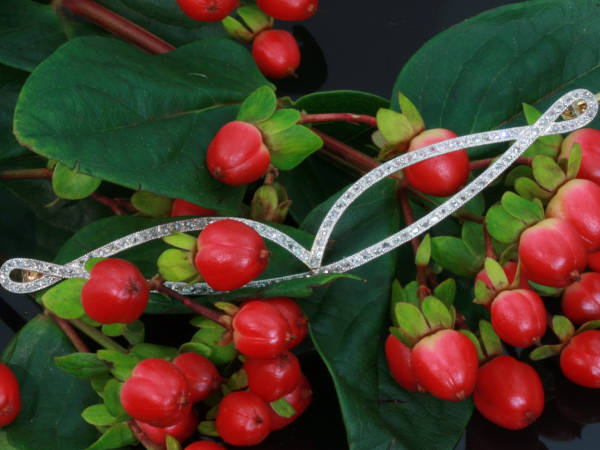 |
Cherry picking in the Garden of Adin!
Click the picture to see a close-up of this elegant brooch.
Autumn in the Garden of Adin
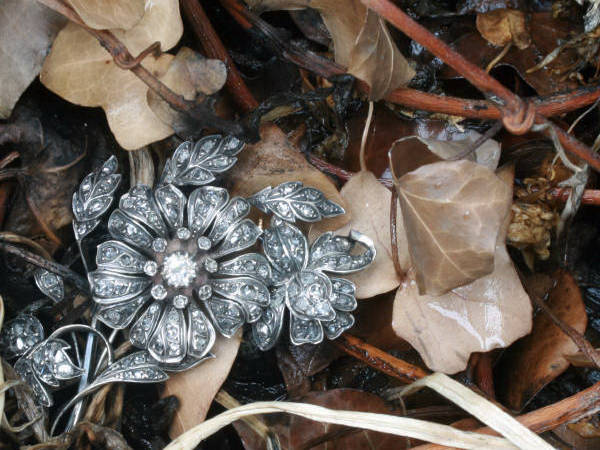 |
Vanitas vanitatum et omnia vanitas
In all we do, and hear, and see,
Is restless Toil, and Vanity.
While yet the rolling earth abides,
Fashion comes and goes like ocean tides;
And ere one style dies,
Another trend shall rise;
That, sinking soon into the grave,
Others succeed, like wave on wave;
part of the poem "Vanitas Vanitatum, Omnia Vanitas."
by Anne Brontë (1820-1849)
(freely rendered)
In the arts, vanitas is a type of symbolic still life painting especially associated with Northern European painters in Flanders and the Netherlands in the sixteenth and seventeenth centuries. The word is Latin, meaning "emptiness" and loosely translated corresponds to the meaninglessness of earthly life and the transient nature of vanity.
By the 16th century flowers would appear (again) as symbols of the seasons. Starting in Roman times is the tradition of the use symbols of mortality, transience and earthly remains. These so called vanitas images have been re-interpreted through the last 400 years of art history, starting with Dutch painters around 1600. It is from these paintings that the Gardener took his inspiration for this Garden of Adin Vanitas Vanitatum.
Click the picture to see a close-up of this beautiful Dutch rose cut diamonds brooch.
Flowers are love's truest language
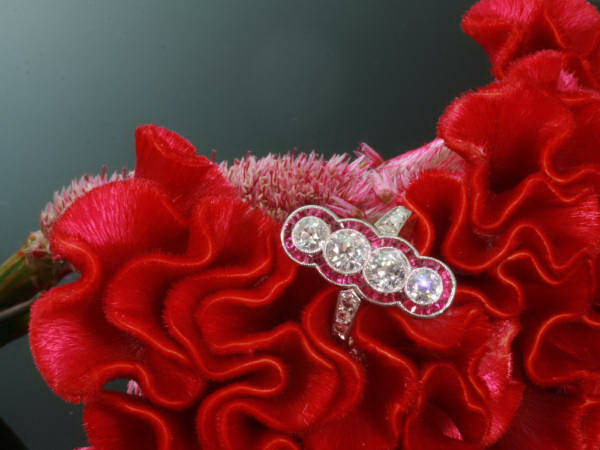 |
(But sometimes even the truth needs a little help)
Flowers are part of our daily life. For virtually every event we have assigned a special flower. Flowers for love, church, church graveyard, marriage, etc. In the 16th century inn's use to have a branch or flower stalk as signboard which later often changed only into the name of a specific tree or flower. Many times one finds flower gardens in mythological sceneries. The allegoric use of flowers is uncountable: attributes for the springtime, the youth, the sunrise, the rhetoric, the virtue etc. Lots of countries carry a flower as national symbol: Hungary had the tulip and Scotland the thistle, etc.
On our site we have dedicated a page to flower symbolism where you can read much more about the symbolism behind the use of floral motifs. Enjoy!
Click the picture to see a close-up of this magnificent Art Deco ring.
Yes, love grows on trees...
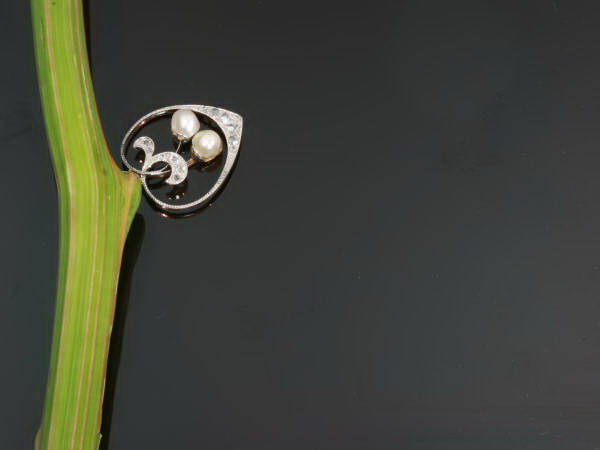 |
In the Garden of Adin,
in a gentle morning breeze,
Adin's paladin,
bent to his knees
and found love...
growing on trees.
Click the picture to see a close-up of this beautiful heart-shaped pendant.
Archaeological-revival necklace
attributed to Fontenay
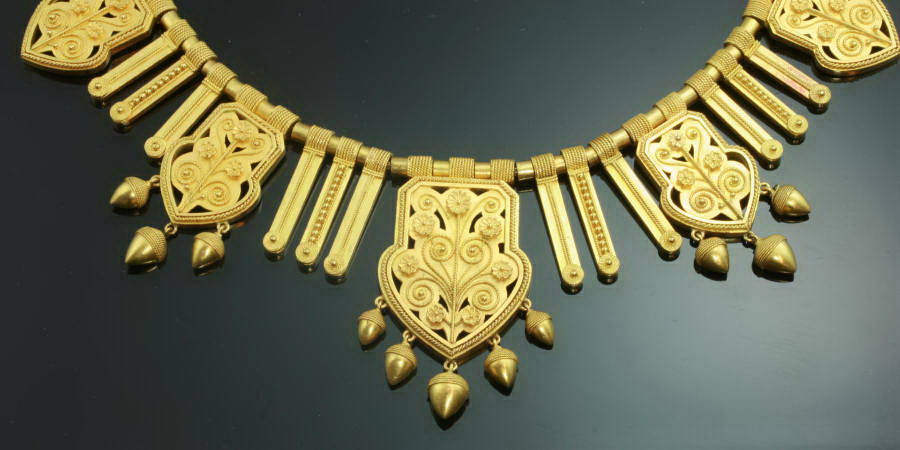 |
ANTWERP, September 16 – It is with great pride that we offer this magnificent necklace here. A true museum piece that we are thrilled to have in our collection.
The continuous uniform fringe decorated with beads, wirework and florettes of this necklace is typical for the work of Eugène Fontenay. A demi-parure of very similar design is illustrated in French Jewelry of the Nineteenth Century, Henri Vever, translated by Katherine Purcell, p. 643. and a similar necklace plus matching earrings were sold last year at Sotheby's for $ 52,000!
The archaeological revival is the appellation for neo-styles of the 18th and 19th centuries that where inspired by discoveries in the excavations of Roman, Egyptian, Hellenistic and Etruscan sites. The first revival in the 18th century, which is called neoclassicism, came after excavations of the cities of Pompeii and Herculaneum. The second revival was inspired by finds in Etruscan burial sites (in Italy). In jewelry, this style is characterized by granulation and filigree decorations.
There is some discussion among experts on who rediscovered the granulation technique. To some it was Castellani in the 19th Century but various methods of manufacturing and handling of granules have been described by Pliny in 79 AD, V. Biringucchio in 1540, G. Agricola in 1556, B. Cellini in 1568, M. Fachs in 1595 and A. Libavius in 1597/1606. In fact never since it was first used has granulation been a lost art. Until far into the 19th Century, the time of its alleged 'rediscovery', this technique has thrived continuously in many places like Russia, Bulgaria, Mongolia, Tibet and Persia. This also holds true for Swiss, German and Dutch folk-jewelry.
Eugène Fontenay (1823-87) was one of the foremost goldsmiths in France during the second half of the nineteenth century. He was a great admirer of the ancient techniques of granulation and filigree, and became best known for his outstanding work in the 'archaeological' style. Fontenay was no doubt inspired by the Campana collection of ancient jewellery, acquired by Napoleon III in 1860, and his firm produced much work in the antique style based on Greek, Roman and Etruscan examples.
Click the picture to see a close-up of this magnificent necklace.
Noah related gold artefact
in the Garden of Adin
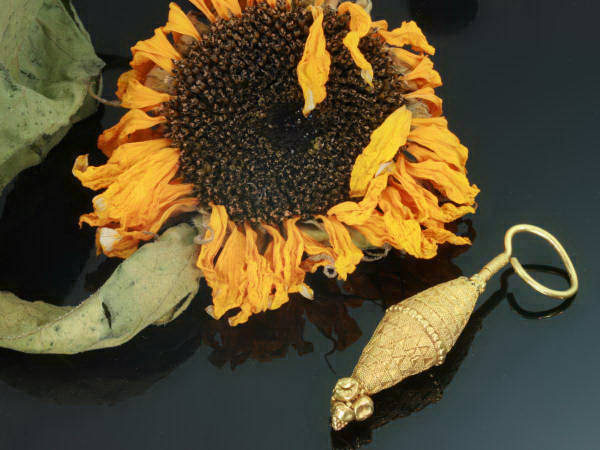 |
ANTWERP, September 12 (Reuters) – Local archaeologists have made an important discovery at the Garden of Adin which might lead to reconsideration of the history and landscape of the site. A report in The Heavenly Inquirer states that the findings include a Caucasian ear pendant made some 1,600 years ago. According to Elkan Wijnberg, general supervisor of antiquities in the Garden of Adin, the discovery of the Caucasian ear pendant is a clear proof of the historical value of the site. He explained us that Caucas, the ancestor of the Caucasians, was the son of Togarmah, who was the son of Japheth who was the grandson of Biblical Noah. He also mentioned the existence of a similar ear pendant in the famous collection of the jewelry museum in Pforzheim, Germany.
Click the picture to see a close-up of this magnificent ear pendant.
We saw it through the grapevine
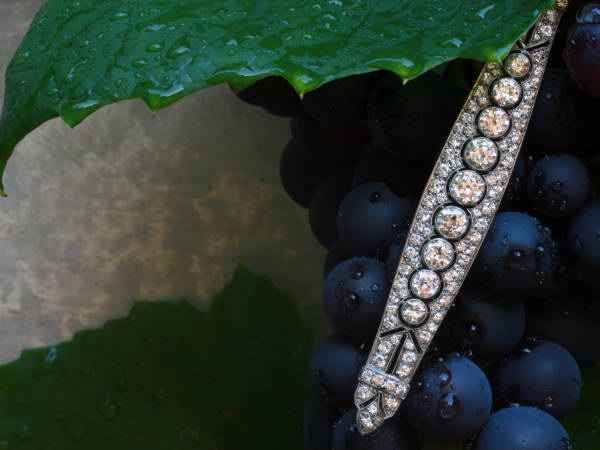 |
ANTWERP, August 30 (Reuters) – Rumours have reached us that the Gardener of Adin is offering the above pictured bar brooch at a reduced price to Adin's followers. When being confronted with this the Gardener confessed. He told us that the price of the brooch had been curtailed with €1,000 which is almost $1,500! In a later statement he testified that this was done in an attempt to lower the presence of crystallized carbon in the Garden of Adin to meet with standards as set in the Kyoto protocol.
Click the picture to see a close-up of this magnificent bar brooch.
Sleeping Beauty Pendant
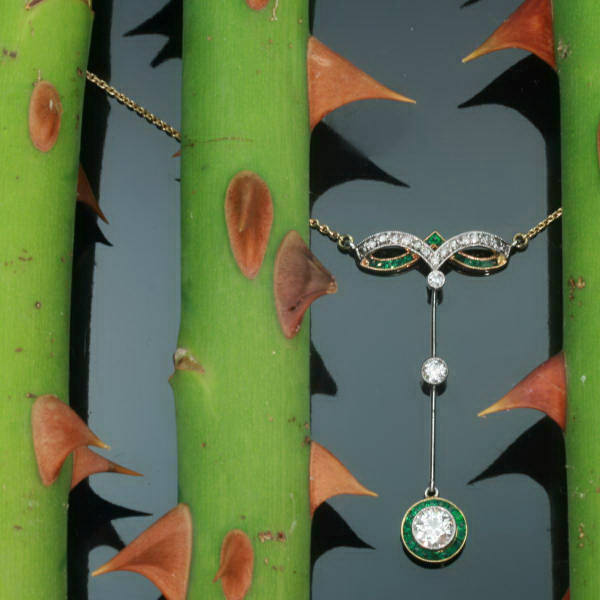 |
ANTWERP, August 23 (Reuters) – Once upon a time in the Garden of Adin, not so far far away from here, the Gardener was pruning the roses when he stumbled upon this sleeping beauty pendant. It must have been asleep there for some 100 years and just waiting to be awoken. We hope that we can be of assistance in its desire to be worn by a princess.
Click the picture to see a close-up of this sleeping beauty pendant.
Ad ogni uccello suo nido è bello
(With every bird its own nest is charming)
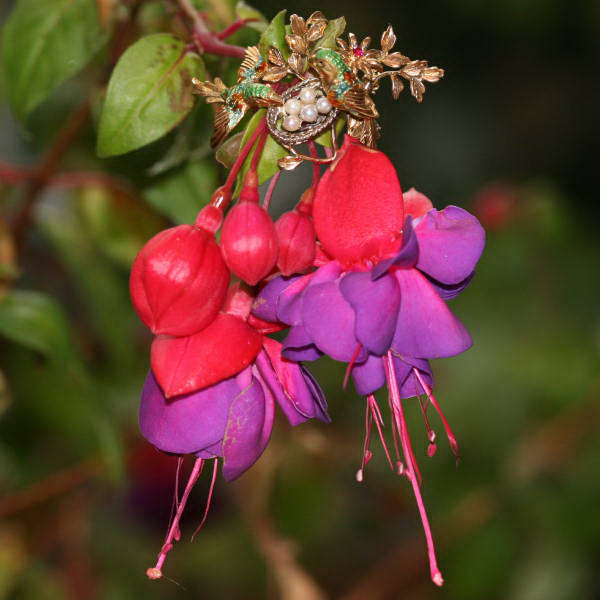 |
ANTWERP, August 16 (Reuters) – During the absence of the Gardener for his sabbatical leave this year it seems that some birds used the quietness in the Garden of Adin to multiply. A bird-spotter spotted a hatching pair of birds and had Adin's photographer called to make a snapshot of the little love couple. We wonder what their eggs will hatch.
Click the picture to see a close-up of these birds on their nest.
Atrocities in the Garden of Adin
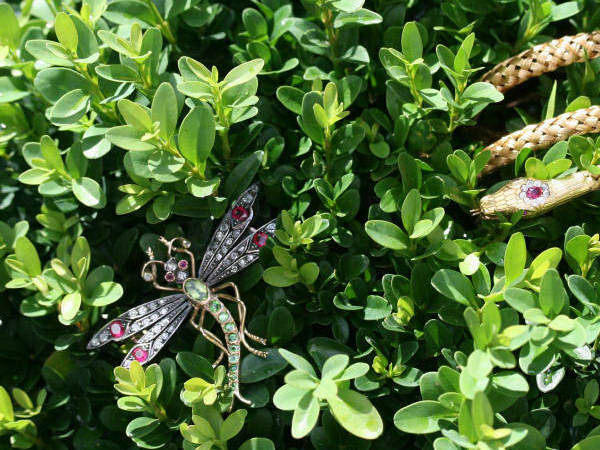 |
ANTWERP, August 09 (Reuters) – In the Garden of Adin a beastliness situation arose with the absence of the Gardener for his annual holiday. An alert passer-by noticed a serpent stalking a dragonfly and notified Adin's photographer who managed to create an image just seconds before the atrocity. We hope that at his returning the Gardener's livestock won't be diminished too much.
Click the picture to see what is left of the Gardener's livestock.
Holidays in the Garden of Adin
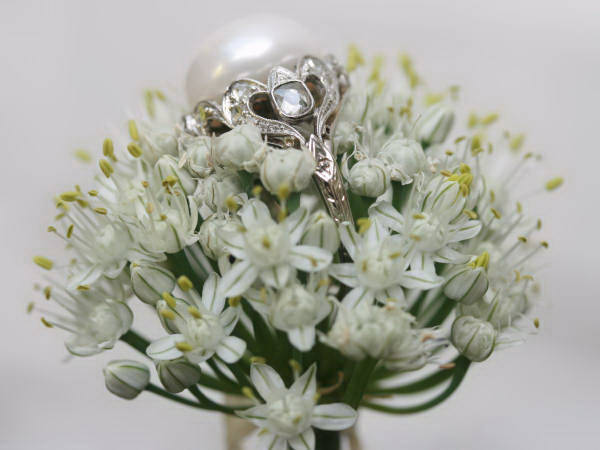 |
ANTWERP, August 02 (Genesish) – And his wife said to the gardener: Behold, I need a break! Build me an ark in the sky and give me entrance into a bright lit place. And behold I will bring a good mood flood upon the earth. But the gardener wanted to take of all his things of gold, many of each he wanted to preserve with him; but his wife threatened to end their covenant. And thus the gardener and his family went on holiday without their jewelry; according to all that his wife had commanded him, so he did.
Wishing all our friends, customers and colleagues
a relaxing vacation!
Click the picture to get to the description of the ring.
A royal shade of purple
in the Garden of Adin
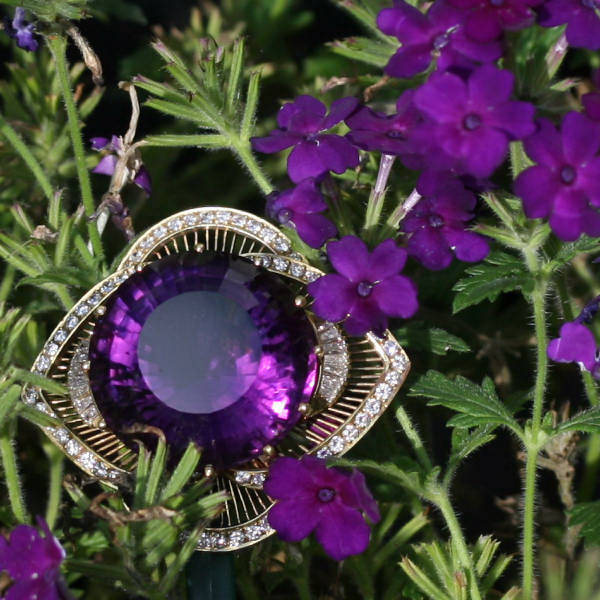 |
ANTWERP, July 26 (Reuters) – In medieval Europe, purple was worn by kings as blue dyes were rare and expensive and only the most wealthy or the aristocracy could afford to wear them. Therefore it is not unexpected that Adin's gardeners found blooming evidence of the origin of this color in the Garden of Adin. Chief-research Elkan Wijnberg said in an exclusive interview with The Heavenly Inquirer that he never had seen an amethyst in such ethereal purple before.
Click the picture to get to the descriptive page of this amethyst brooch pendant.
Superb 18th Century cameo
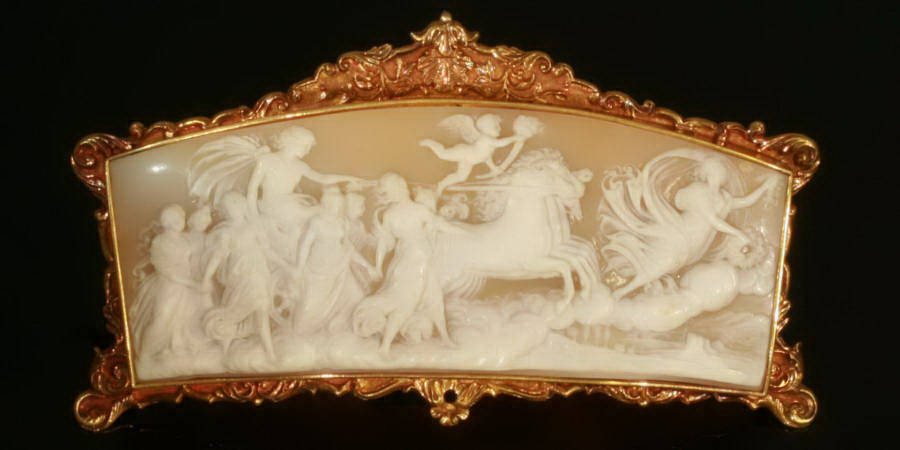 |
Two weeks ago we were lucky being offered an impressive private collection of antique jewelry. The person who brought it to us inherited it from his parents, antique jewelry dealers who retired some 30 years ago, and he wanted to find a good home for it. We felt honoured that he came to us and were amazed by the quality of this collection. One could see the love these people had for antique jewelry.
Among the many high quality pieces we got was one truly amazing cameo. It took us many hours to determine where the cameo came from and what it depicted and the result is amazing. If you want to find out about this cameo just click the picture.
End to plague in The Garden of Adin
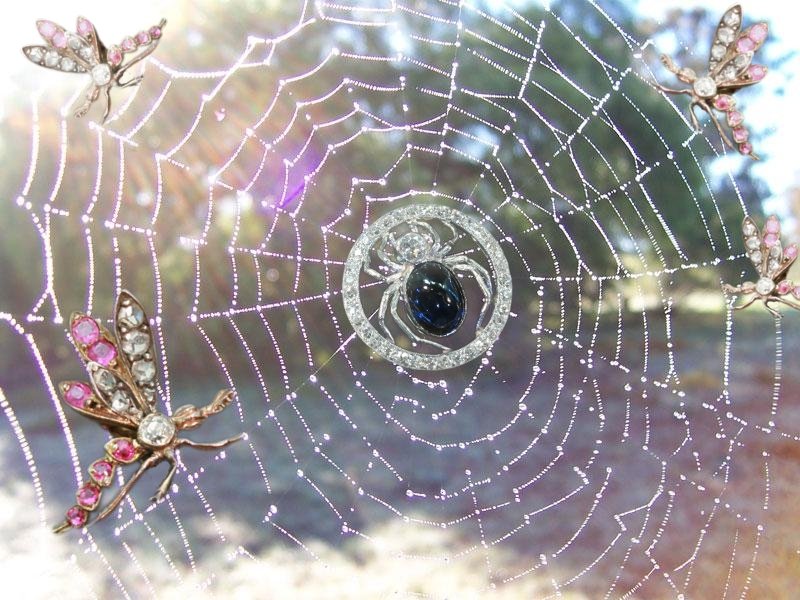 |
ANTWERP, July 12 (Reuters) – Last week's mosquito plague that ascended over the Garden-of-Adin turned out to be a heavenly gift for the local spiders. Independent observers told us that they had never seen spiders as well-fed and healthy as at Adin.
Click the picture to get to the descriptive page of this spider.
Swarmings above The Garden of Adin
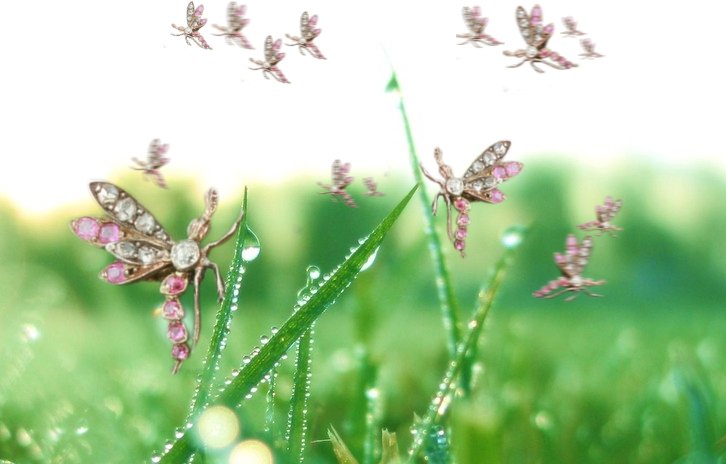 |
ANTWERP, July 05 (Reuters) – In the beginning of the evening and morning of the fourth day of this week Adin's observer yelled: “Behold! There is a swarming of living creatures across the expanse of the heavens above the Garden-of-Adin!”. And Adin's helpmate brought it to man to see what he would call it. And the man called it “stickpin”, that was its name. And we saw all Adin found, and behold it was very good.
(We belief that any resemblance with similar situations in history is purely coincidental.)
Click the picture to get to the descriptive page of this stickpin.
Serpents and apples in The Garden of Adin
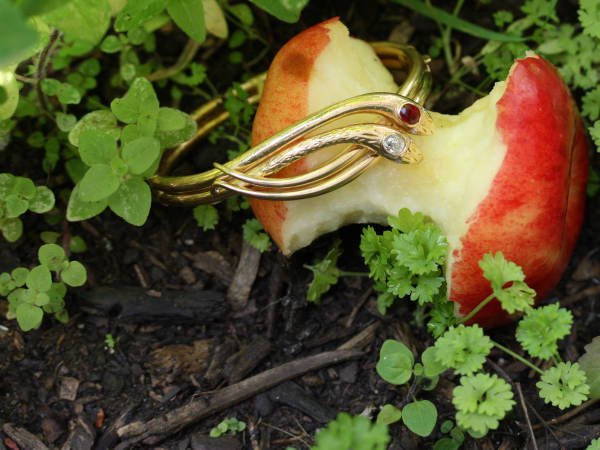 |
ANTWERP, June 28 (Reuters) – Well-informed sources at Adin, Antwerp - Belgium, told us that they are being overwhelmed with requests for information on the exact whereabouts of the Garden-of-Adin. For obvious reasons the exact location of this garden and its treasures is kept a secret. But we were told that the Adin-team is planning to offer on their website some of the treasures they will find.
In the beginning of this week, in the midst of the garden, a serpent was discovered. But behold! When Adin's photographer wanted to create an image of this illustrious animal, he found it entwined with a mate in a rather intense position on a just-eaten apple.
We belief that any resemblance with other known cases of serpents and apples is purely coincidental.
Click the picture to get to the descriptive page of these serpents.
Another mystery in The Garden of Adin
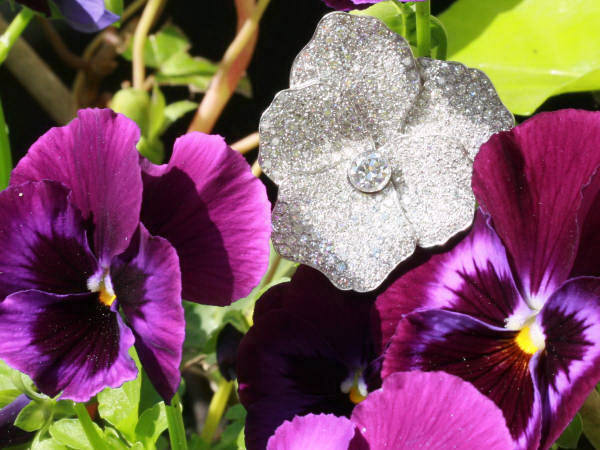 |
ANTWERP, June 21 (Reuters) – Botanists at Adin, Antwerp - Belgium, have discovered a till-now-unknown flower in their garden. They suspect the plant belongs to the family of the Pansy (Viola Tricolor Hortensis). Lead author and a researcher Elkan Wijnberg at Adin Antique Jewelry suggested to name this flower Viola Albino Diamantes. Soon an article will be published in the magazine of Adin's Association for the Advancement of Science (not to be confused with the American Association for the Advancement of Science - AAAS ). We'll keep you updated!
Click the picture to get to the descriptive page of this flower.
Exotic beetle spotted in garden of Adin
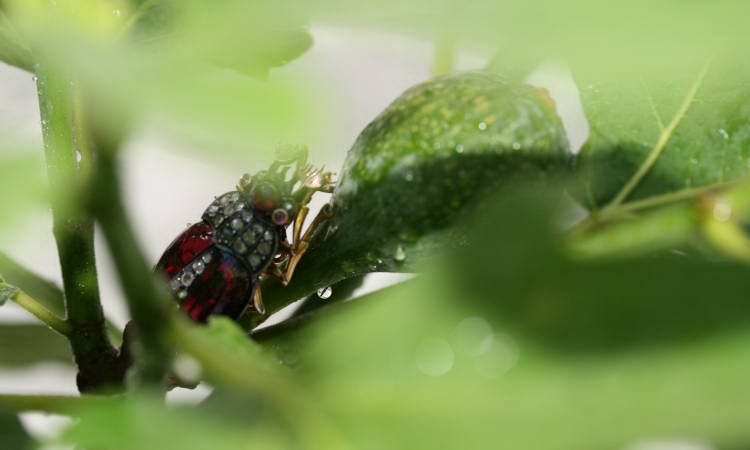 |
ANTWERP, June 14 (Reuters) – Entomologists at Adin, Antwerp - Belgium, have spotted an exotic beetle in their garden. How or when the insect came there is unknown but “Our study convincingly shows that there is a link between the global warming and bejewelled insects hiding under leaves,” said Elkan Wijnberg, lead author and a researcher with Adin Antique Jewelry.
Click the picture to see the all the pictures our photographer was able to make from this insect.
How Art Deco got its name
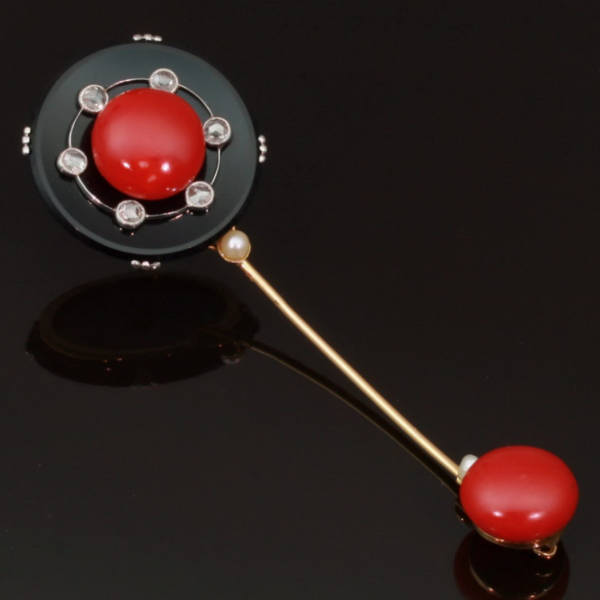 |
One of the major design events of the 1920s, if not the most important, was “L'exposition Internationale des Arts Décoratifs et Industriels Modernes” which is French for “The International Exposition of Modern Industrial and Decorative Arts”. This World's fair was held in Paris, France from April to October 1925.
The term Art Deco was derived by shortening the words Arts Décoratifs in the title of this exposition and described designs in terms of a broad decoratively "modern" style, influenced strongly by Decorative Cubism. One of the members of the Admission Committee for the jewelry department of this trail-blazing fair was the maker of the pin we show here, Mr. George Fouquet.
George Fouquet (1862-1957) is recognized as one of the very few and best known artist jewelers of his time. He won many international awards and worked closely together with artists of his time, like Alfons Mucha.
George Fouquet's jewelry can be found in collections of many important museums all over the world; from the Victorian & Albert in London to The Metropolitan Museum of Art in New York. He bequeathed his archive and designs to the Musée des Arts Décoratifs in Paris
The so-called jabot-pin by George Fouquet we show here, is as close as one can get to the source of pure Art Deco jewelry.
Click the picture to get to the descriptive page of this pin.
A lady came into our store...
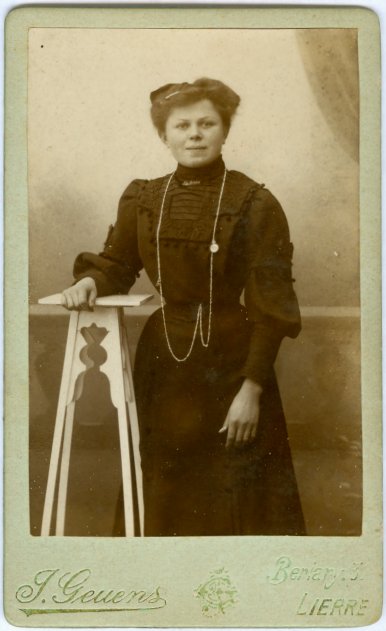 |
A lady came into our store offering us an antique silver chain. She knew it was antique because she had a dated picture from her grandmother wearing it. She showed us the picture and indeed when looking at the picture through our jewelers loupe we saw the same chain. The back of the picture gave away the dates 1911, 1912 and 1913.
Normally we do not deal in silver jewelry but this is so much more then “just jewelry”. This is what our trade is all about, the link between us and our ancestors documented on a dated picture. The lady sold us the chain together with the picture and we are proud to offer it here among our gold, platinum and diamond jewelry. The combination of an antique photograph with the original chain depicted on it is truly unique!
When looking closely at the picture we see a young woman with the, in those days fashionable, wasp waist and sautoir (long chain). The strong bound wasp waist was the ultimate standard of feminine beauty. Although a normal average waist measurements varied between 50 and 58 cm (20 and 23 inches), women tortured themselves with special corsets to measurements between 40 and 45 cm (16 to 18 inches).
We can also recognise the name tag she is wearing on her dress; Catherine. We do not think that granny Catherine would have ever imagined that people would still speak about her 100 years later.
Click the picture to get to the descriptive page of this chain.
Sweet jewelry...
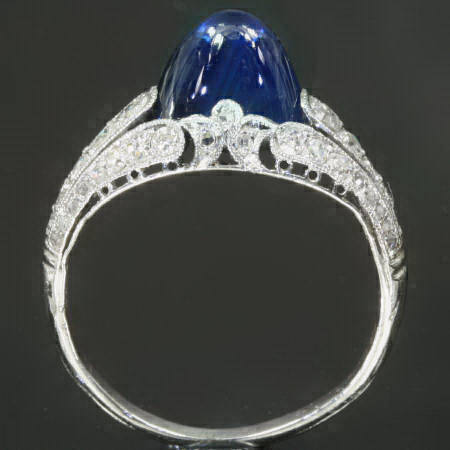 |
This must be one of the most elegant rings we have ever had. It has the graceful finesse of the Edwardian style combined with the very geometrical forms of Art Deco. This mixture of styles is not surprising as both Edwardian and Art Deco are coevals.
The center is set with a high domed cabochon cut natural sapphire. Such sapphires are called "pain du sucre" which is French for sugar loaf. A sugar loaf, a tall gently-tapering cylinder with a conical top, was the traditional form in which refined sugar was exported from the Caribbean and eastern Brazil from the 17th to 19th centuries.
A sweet piece of jewelry indeed.
Click the picture to get to the descriptive page of this ring.
Antwerp...
Diamond capital of the world for centuries
(not just an empty phrase)
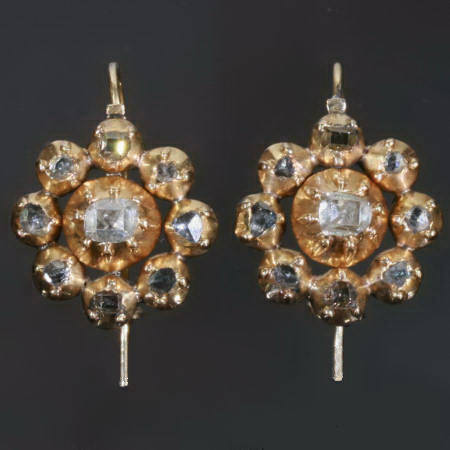 |
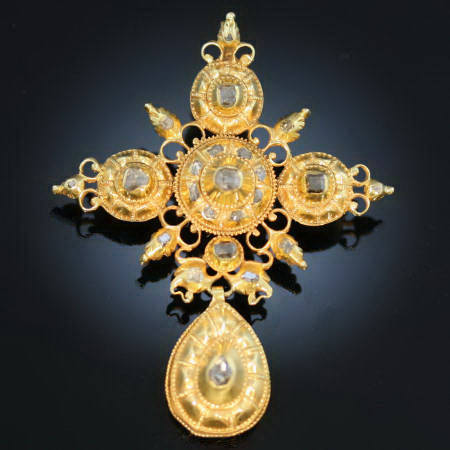 |
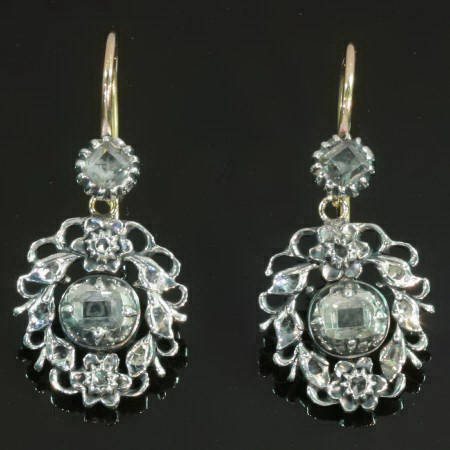 |
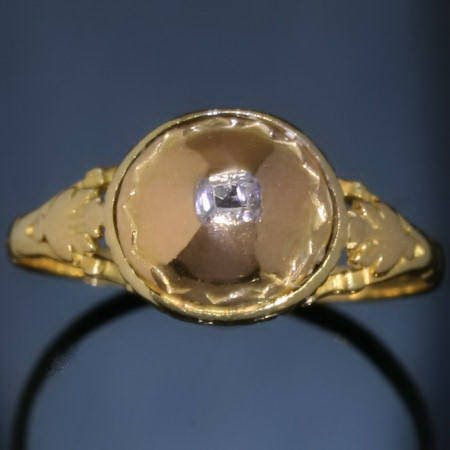 |
Of all cities, it was our hometown Antwerp where, mid 16th century, the table rose cut diamond was introduced. A way of diamond polishing where the top and bottom of the stone were left flat, sloping facets and chamfered corners, creating a sort of trapezium. One can recognize the old 16th, 17th and 18th century rose cuts by these flat tops, the “table”. Later rose cut diamonds were polished in a point to the top. Imagine the ingenuity and patience people had in those days to polish world's hardest material in the shape of their desire.
The depicted jewels here are set with these so called table rose cuts and are about some 300 years old. Just imagine wearing jewelry that old...
Click the pictures to get to the descriptive pages of these jewels.
From manure to jewelry.
(the unlikely evolution of the dung beetle)
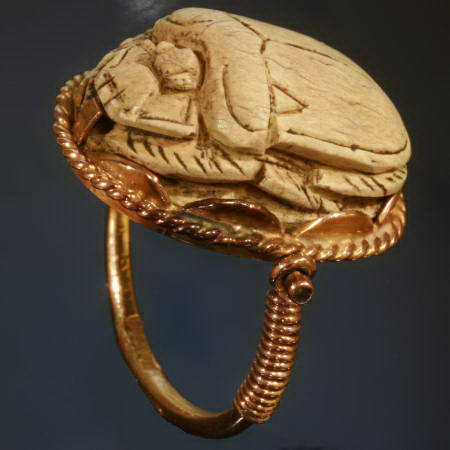 |
In the Old Kingdom of Ancient Egypt, the use of the dung beetle (also called: scarab) as a symbol became common. The dung beetle's rolling of dung into a ball was seen as an earthly symbol of the heavenly cycle. Cut in bone, ivory, stone, Egyptian faience, or precious metals they were often incorporated into tombs, as grave goods, or given as 'gifts'. Over centuries till our days, to people with a fascination for the art and beliefs of ancient Egypt, the scarab is an item of popular interest.
In the past 200 years, Ancient Egypt has been a rich source of inspiration to art and fashion worldwide for at least three times. We call these three periods the Egyptian revivals or Neo-Egyptian styles and they are divided as follows:
- the first one was initiated by Napoleon Bonaparte's Egyptian Campaign, circa 1797
- the second by the construction of the Suez Canal in 1859 and its official opening in 1869
- the third by the discovery of the tomb of King Tutankhamun in November 1922.
We think the ring pictured here is made in Egypt somewhere between 1920 and 1930. Perhaps not even made as a result of the third Neo-Egyptian revival but just to sell to tourists. It could also be questionable if the scarab is originally from the Ancient Egyptian era or specially made to look old, as there are no reasons to believe that the tourist industry in general has changed over the years.
Click the picture to get to the descriptive page of this jewel.
It is not only fine feathers
that make fine birds.
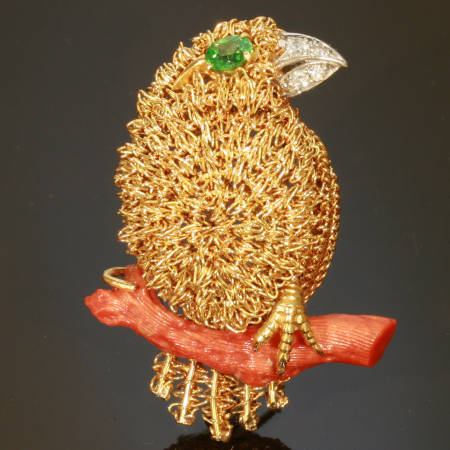 |
Although Aesop (a Greek storyteller who lived 620-560 BC) meant something else with his saying, he couldn't be more accurate for the bird pictured here. If something got lost over the years in the art of jewelry making then it is the cooperation of various disciplines that are needed to get to one well designed and well made piece of jewelry. The artist/designer, the modeller, the goldsmith, the setter, the engraver, the polisher, all did one's bit in their field of expertise.
As is the case with this strange bird here. A typical product of the fifties of the twenthieth century. All sorts of animals were used as source of inspiration. Made in gold and precious stones sometimes even decorated with enamel, the result of the experts' collaboration was, most of the times, well-made, clever and cute.
The special thing about this bird, besides being funny and a well-made appearance, is the stone used for its eye. A beautiful velvetish light-green colored natural demantoid of nearly half a carat that gives a new dimension to the meaning of the word "sparkle". Proofing that only the best of best was used in such pieces. Demantoid is the most expensive and rare of garnet gemstones, with fine specimens like the one used here commanding prices of thousands of dollars per carat - even more expensive then diamond!
Click the picture to get to the descriptive page of this jewel.
"Quelle heure est-il?"
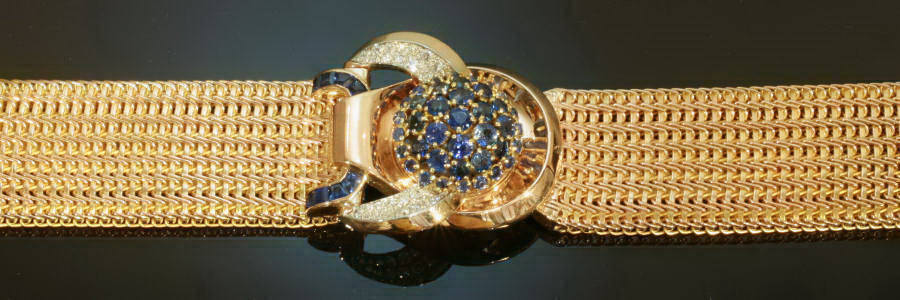 |
(even the French way of asking for the time is elegant)
Belgium and its monarchy as we know it today only exists since 1831. So to speak of a typical Belgian style would be a bit exaggerated. It is more that the Belgian culture is strongly influenced by on one side Holland and on the other side France. It is not that long ago that speaking French was considered to be chic and elegant and Flemish (a Dutch dialect) to be coarse and common.
Being focused on the French culture, Belgian jewelers would let themselves be influenced by the big French jewelry houses. As is the case with this ladies bracelet watch from the Brussels' jeweler Altenloh, one of the very few jewelry suppliers to the court in Belgium. The jewel is a typical example of a high quality ladies watch in Retro style where the watch is hidden behind a bejewelled hinged shutter. We browsed through our library and were surprised not to find a picture of this beauty in any book.
Click the picture to get to the descriptive page of this jewel.
Art Deco?
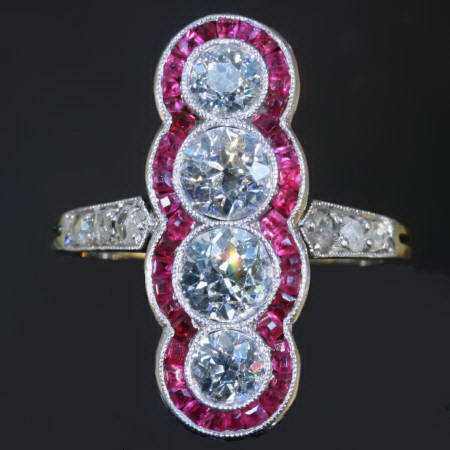 |
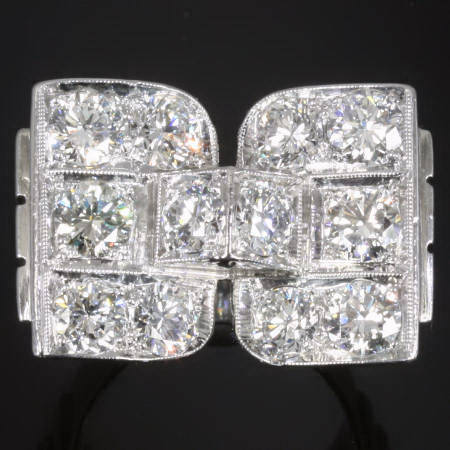 |
They can't be both Art Deco!
Many people mistakenly would designate the style of both rings as Art Deco. However while the ring on the left is Art Deco indeed the style of the ring on the right is called Retro (perhaps even early Fifties).
That both styles are mingled is no big wonder as one is strongly influenced by the other. The Retro style uses the same type and language of geometrical shapes as its predecessor: the Art Deco style; only with bolder heavier lines, shapes and stones.
The Art Deco style was introduced in the 1920s as protest against the dreamy (sometimes even hallucinant) Art Nouveau style and it ended in the 1930s. The style emphasized a very abstract design with geometric patterns. The baguette and emerald-cuts, which had been developed in the nineteenth century, were very popular in the 1920s because they blended so much with the geometrical lines of the Art Deco style.
The Retro style as successor of Art Deco florished between roughly 1940 and 1950. Typical for the Retro style is its imitation of three dimensional folds of fabric with the ribbon bow as its most popular motif, often highlighted in the center with a calibré cut ruby or sapphire knot. In the Retro ring on the right we distantly recognize this bow-shape.
Click either picture to get to the descriptive page of these jewels.
sigh... love, love, always love
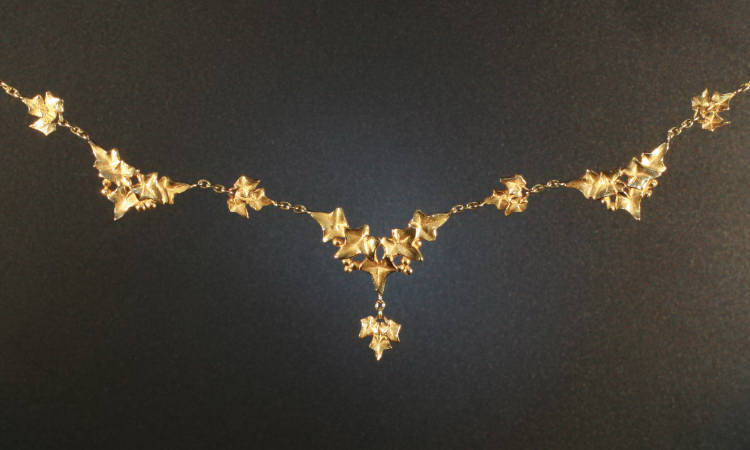 |
Love in flower symbolism
In the late 19th, early 20th century there was a revival of the use of symbolic meanings of plants and flowers. Nature seemed to be a forest of symbols, and flowers were saturated with deeper meanings.
As is the case with the late 19th century French elegant necklace we show here. We clearly recognize an ivy. But what is so romantic about the ivy you would say. The romantic facet of ivy is based upon its tendrils which attach to a wall in a way that can be explained as affectionately. In France one would give a piece of jewelry with ivy depicted on it while saying "Je m'attache ou je meurs" which (freely) translates to "I will cling to you or I will die"...
This hidden meaning is what we like about our antique jewelry, it gives the piece an extra depth. The added emotional value that is not necessary obvious to all but just between the donor and the receiver.
Click the picture to get to the descriptive page of this jewel.
1819?
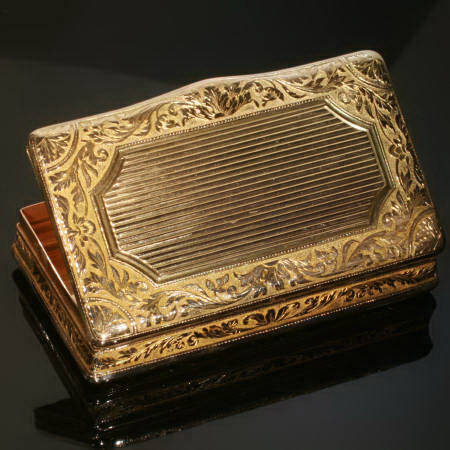 |
What happened in 1819?
In 1819, Alexandrina Victoria was born who later got crowned Queen Victoria of the United Kingdom, Thomas Jefferson founded the University of Virginia and for $5 million Spain ceded Florida to the United States. Ah, and it is the year this box was made.
When looking at the pristine condition of this beautiful box one can only imagine the care and prudence the many subsequent owners of this box must have had in its 200 year old history. Imagine 200 years! That is about eight generations! With pieces this old one realizes that one doesn't really own a piece of history rather then one is the temporarily guardian of such object.
Click the picture to get to the descriptive page of this jewel.
The Griffin
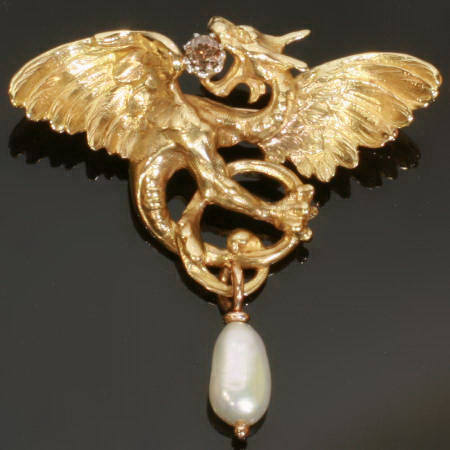 |
A guardian of treasures
The griffin, a strange and legendary hybrid creature, usually represented as being part eagle and part lion is normally known for guarding treasures. The griffin motif is found in sculptures of the ancient Babylonians, Assyrians, Persians, Greek and Romans; in beast allegories of the early Christians; and in Gothic architecture of the late Middle Ages. The griffin remains common in heraldy, representing strength and vigilance.
A hybrid is a composite of two or more species of animal and/or human, and the seven most known hybrids are:
- The centaur
In Greek mythology and art, the centaur has the torso of a human combined with the body of a horse. - The cockatrice
This creature was also known as a basilisk ("king of serpents"), and its very glance could kill; the cockatrice was composed of a dragon's tail and assorted poultry parts. - The giants (gigantes)
These fierce and frightening beings were the offspring of Gaia (the Earth). - The griffin
According to myth, the griffin was a creature with a lion's body attached to the head, wings, and claws of an eagle. - The harpy
Harpies had female torsos melded with vulture parts; the name harpy is derived from the Greek word that means "snatcher". - The satyrs (faun)
Satyrs were often the companions of Dionysos, and these creatures were depicted in myth and art with the legs of goats and bestial natures. - The sirens
Women with bird-like bodies; sirens were legendary for luring sailors by singing their enchanted songs.
Visit our antique jewelry glossary for a more comprehensive explanation on griffins.
Click the picture to get to the descriptive page of this jewel.
An Eastern fairy tale
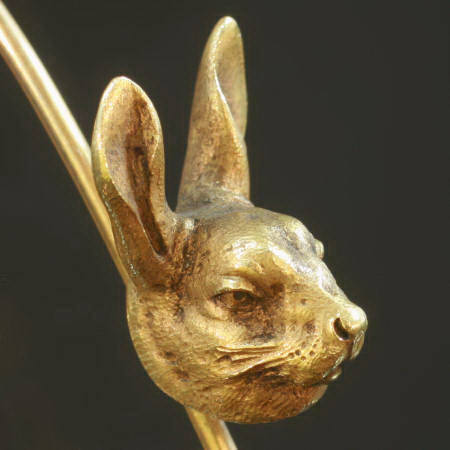 |
How are bunny and hare linked to eggs?
From the many non-religious customs in many religions that find their origin in pagan celebrations of nature the Eastern Bunny must be one of the cutest. The Anglo-Saxon Eastern Bunny and his Continental cousin the "lièvre de Pâques" (French for "Hare of Eastern") find their origin in the pagan celebration of the return of springtime. Way back in the old days (in springtime), when people would go out to forage for food on the land, they would find eggs in old hare forms and/or rabbit holes (the eggs were laid there by different bird species).
To illustrate this little fact we would have loved to show you a big Fabergé egg but we haven't had one in the last 30 years and the chance we'll have one in the coming 30 years is also rather small. Instead we used the golden pin with hare head that we do have.
Click the picture to get to the descriptive page of this jewel.
Specific Dutch regional jewelry
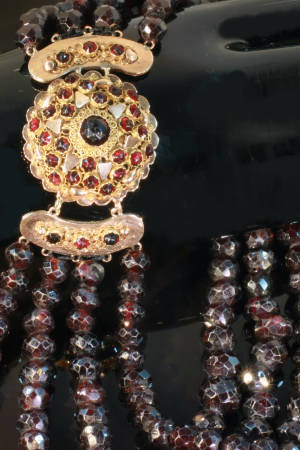 |
This type of necklace reminds me of the days that my interest in antique jewelry was just burgeoning. One of the first books, if not the first book, I bought was about jewelry that was worn with the specific local Dutch costumes. Till the beginning of the 20th century, in some Dutch villages, people were recognisable by their clothes and jewelry. In the Netherlands many villages had their own costume. Only by looking at a piece of jewelry or clothing, experts can tell from which region people were, which faith they had and even their marital status.
The type of necklace here is also depicted in that book and is made in Walcheren, Zeeland (the Netherlands). The closure is in 14K two tone gold (red and yellow) and it has four strings of facetted garnet beads. The closure itself is skillfully embellished with one big and 24 smaller rose cut garnets plus six smaller garnets at the sides. Necklaces like this were worn by women of all ages as part of the "klederdracht" (local dress in its distinctive style).
Today there are nearly any people left who wear the dress of this local distinctive style. While the youngsters do not wear it at all anymore the older people do wear it occasionally. And in 2003 the last two men wearing the traditional clothing died and most probably in another 10 till 15 years no woman will be wearing it anymore either.
Click the picture to get to the descriptive page of this jewel.
Yes, it is a tiara
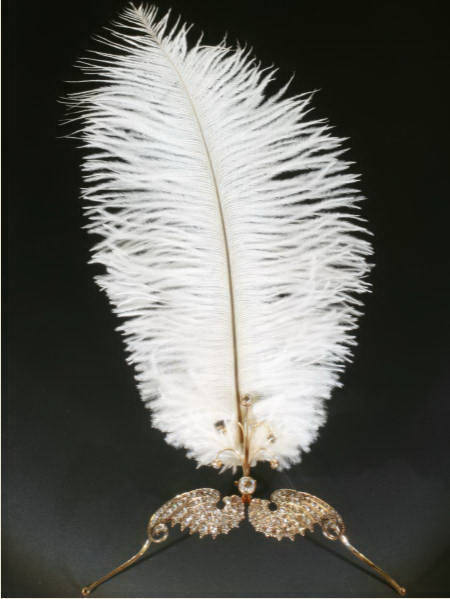 |
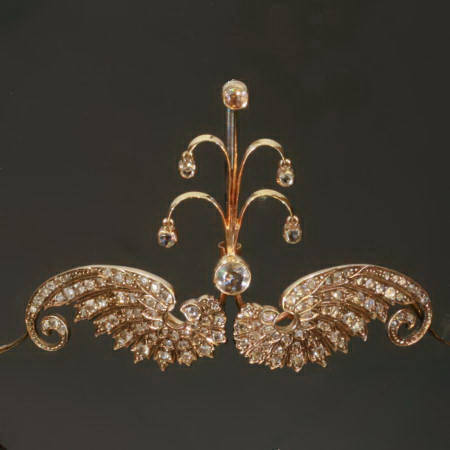 |
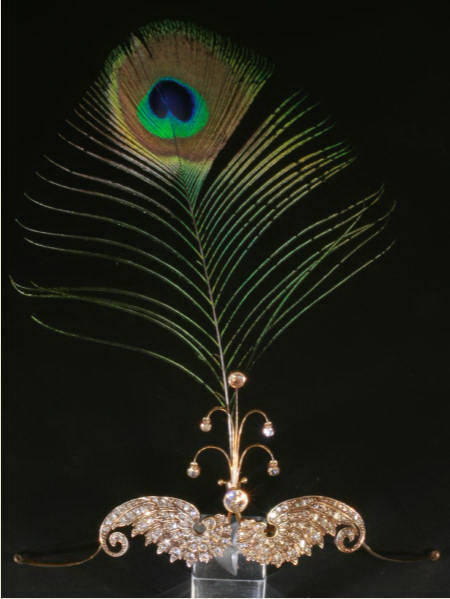 |
Some time ago when walking through the Victoria & Albert Museum in London a little show case grabbed my attention. In it were objects from older times (not uncommon in a museum) and an invitation to the visitors to guess what the use was of those objects. Special pliers used to widen the interior of the fingers of gloves, silver handles with a metal hook at the end that were used to pull on boots or to close a corset. It made me realize that mankind invented so many decorative “useful” things, and abandoned them as easily with the change of fashion season.
Will the tiara pictured above be the next thing of beauty in this line of superfluousity? We think not. Designed and skilfully made by our ancestors who thought that a tiara was inextricably bound up with the “robe de soirée” (French for “evening gown”). The tiara is an unexpected, surprising and yet very wearable piece of jewelry. While occasions to wear one are few and far between, the tiara is still considered the figurative and literal crown to the robe de soirée, making the bearer the princess of the night.



